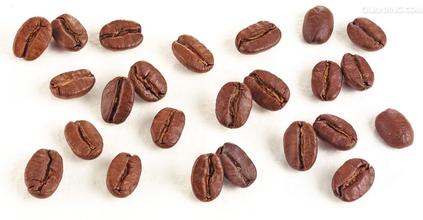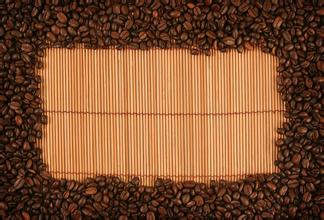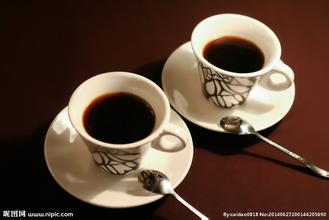The classification of coffee the culture of coffee
Category of coffee editors
Coffee trees can be roughly divided into five species, of which Arabica and Robusta are the more common. Arabica species accounts for more than 70% of the world's total production. This variety is generally planted on slopes above 900 meters above sea level and is mostly produced in tropical high altitude areas such as Central and South America, East Africa, Southeast Asia and Hawaii. Its pleasant aroma, rich taste, and the tree species need more artificial care, the stability of the temperature and humidity in the climate is also higher, so the price is also more expensive. Roscostat, which is more adaptable to the environment, accounts for 30% of the world's total production. Its flavor is mediocre, bitter, and more importantly, caffeine content is 2 to 3 times that of Arabica. Generally grown on slopes with an altitude of 200 to 600 meters, the requirements for artificial care are very low, so the price is relatively low, and it is mostly used for canned and instant coffee.
* Jamaica (West India)
Jamaica is a republic of islands located in the Caribbean Sea. Coffee is grown on the slopes of the mountains on Hengduan Island. The region can be divided into three regions: BM (Blue Mountain) and HM (High Mountain) and PW (Purée washed coffee beans), which are also brand names for coffee. The rankings of quality and price are ①, ②, ③, and the rankings of production volume are ③, ②, ①. Among them,"Blue Mountain" flavor, aroma, concentration, acidity are very average, with a very high evaluation. Almost all products are sold to Japan.
Coffee culture editor
1 What is coffee? Simply put, it is a common drink, one of the three major drinks in the world. Second only to oil in terms of global trade volume, it is a drink more popular in the world than tea. Coffee is definitely not just an instant, monotonous drink, nor is it just a coffee-flavored drink with a lot of milk, sugar, ice, etc.; coffee is something that can be tasted and felt slowly, as rich as Chinese tea.
Coffee breeds coffee culture. After 1615 Penicia began to spread coffee throughout Europe. The strong heat of the earth certainly caused friction in various places. In Rome it also caused Muslims to drink a drink brought to Christians. King Clementine VIII of that time "although it is the devil's drink is so delicious." It's a shame to leave this drink to the heathen." So he accepted coffee for the Christians who came to be baptized. There are countless coffeehouses in England, popular among gentlemen. Men talk politics, literature, business, etc. here. Only men could enter the café, and some did not even go home. So in 1674 many housewives petitioned for the café to be closed. Turkish coffee also spread to France. Since the Turkish ambassador offered Louis XIV coffee in 1669. French high society was also influenced by charm and produced countless salons, and new 'literature, philosophy or art' came into being accordingly. That wave of coffee culture also affected the general public, and coffee on street corners began to fill up and was born in 1686. Brogobo." Because of Balzac, Rousseau and other cultures, people continue to gather, and known as the intellectual salon

Important Notice :
前街咖啡 FrontStreet Coffee has moved to new addredd:
FrontStreet Coffee Address: 315,Donghua East Road,GuangZhou
Tel:020 38364473
- Prev

Types of coffee beans introduce the planting methods of coffee trees
At present, coffee beans are grown in about 66 countries in the world, among which they can be classified as Arabica, Robusta and Liberica. Arabica is the largest major variety of coffee beans, accounting for about 80% of its aroma and quality. Robusta is mostly used to make instant coffee because of its poor quality. Liberica is seldom mentioned because of its poor quality and low yield. Coffee
- Next

The origin of coffee. What are the legends and myths of coffee?
The Legend of Coffee there are many legends about the discovery of coffee, one of which is according to Rothschild, a Roman linguist. Neroy (1613-1707) records: about the sixth century AD, when an Arab shepherd Caldai was herding sheep to the Isobian prairie, he was very excited and excited to see each goat. He was very surprised. After careful observation, he found it very strange.
Related
- Does Rose Summer choose Blue, Green or Red? Detailed explanation of Rose Summer Coffee plots and Classification in Panamanian Jade Manor
- What is the difference between the origin, producing area, processing plant, cooperative and manor of coffee beans?
- How fine does the espresso powder fit? how to grind the espresso?
- Sca coffee roasting degree color card coffee roasting degree 8 roasting color values what do you mean?
- The practice of lattes: how to make lattes at home
- Introduction to Indonesian Fine Coffee beans-- Java Coffee producing area of Indonesian Arabica Coffee
- How much will the flavor of light and medium roasted rose summer be expressed? What baking level is rose summer suitable for?
- Introduction to the characteristics of washing, sun-drying or wet-planing coffee commonly used in Mantenin, Indonesia
- Price characteristics of Arabica Coffee Bean Starbucks introduction to Manning Coffee Bean Taste producing area Variety Manor
- What is the authentic Yega flavor? What are the flavor characteristics of the really excellent Yejasuffi coffee beans?

